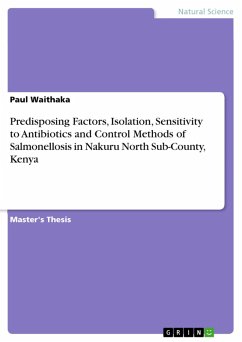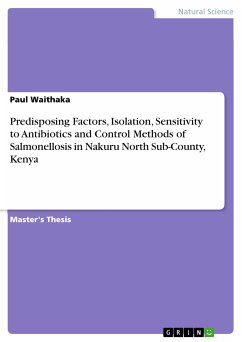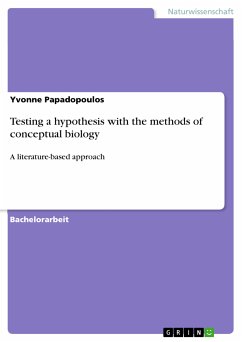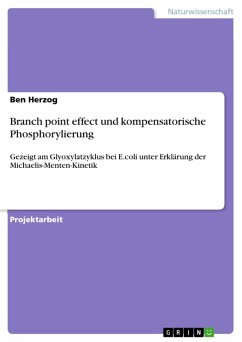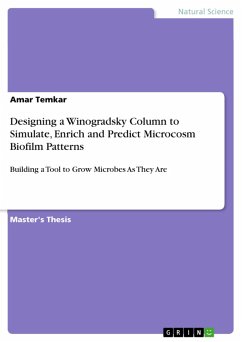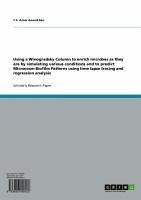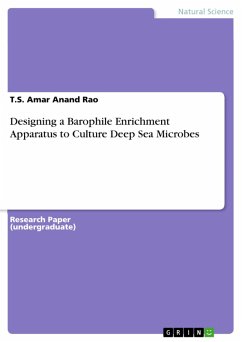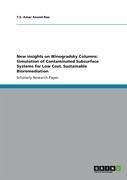Master's Thesis from the year 2014 in the subject Biology - Micro- and Molecular Biology, grade: 67.13, Kenyatta University (Pure and applied sciences), course: MSc. Microbiology, language: English, abstract: Salmonellosis is one of the most common and widely distributed group of enteric diseases in the world today. It causes high mortality and morbidity especially in developing countries. This study was aimed at identifying the factors that predispose people to salmonellosis. In addition the study was meant to isolate Salmonella, and determine its antimicrobial sensitivity and test the effectiveness of water treatment for the control of salmonellosis. To identify the predisposing factors of salmonellosis, a questionnaire was used. For the isolation of Salmonella, a total of 630 samples were collected from raw cows' milk, sheep and cattle intestinal wastes, raw fruit and vegetable salads, waste water, water sources and water that had been treated by the study population through boiling, chlorination and filtration. Samples were also collected from water that was treated through solar disinfection. The samples were pre-enriched using peptone water then selectively enriched using Selenite F broth and incubated at 37 oC for 24 hrs and subcultured in xylose lysine desoxycholate (XLD) agar and Salmonella- Shigella agar in five replicates. Typical Salmonella colonies were confirmed by biochemical test using API E-20 and the species serotyped. The isolated serovars were tested against seven antibiotics; cephalexin, nalidixic acid, chloramphenicol, ciprofloxacin, gentamicin, amoxycillin and sulfa-trimethoprim. The results were analyzed by the use of chi-square test, correlation test and Anova using Statistical Package for Social Sciences (SPSS version 11.50) software. Level of education, occupation, method of food storage, cleaning of kitchen utensils, hand washing, human waste disposal, animal wastes, presence or absence of sewers, waste water, tap water, river water and water treatment were significantly associated with salmonellosis while sex, well water and method of water treatment were not. There was no significant difference between the microbial load of Salmonella isolates from milk, sheep and cattle intestinal wastes, waste water, fruits and vegetable salads in Maili 5, Bahati and Kabatini. However, River Kandura's water mean Salmonella isolates varied significantly from upstream to downstream. Of the 105 Salmonella isolates Salmonella enterica serovar Typhimurium were (45.7 %), S. enterica serovar Typhi (22.9 %), S. enterica serovar Enteritidis (21.9 %) and S. enterica serovar Dublin (9.5 %). All the serovars were susceptible to gentamicin.
Dieser Download kann aus rechtlichen Gründen nur mit Rechnungsadresse in A, B, BG, CY, CZ, D, DK, EW, E, FIN, F, GR, HR, H, IRL, I, LT, L, LR, M, NL, PL, P, R, S, SLO, SK ausgeliefert werden.

